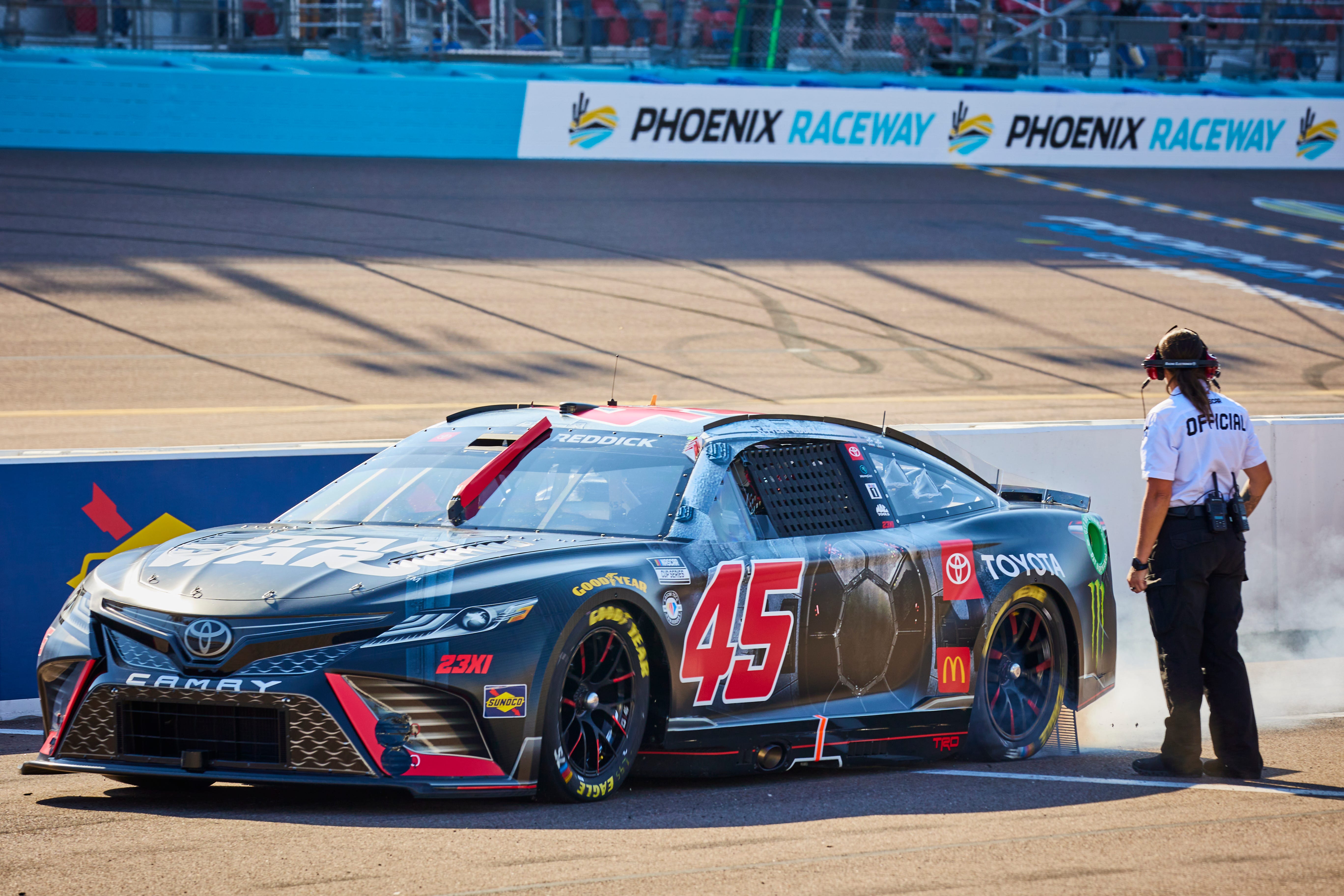NASCAR has said for months, and arguably years, that the reasons against increasing horsepower to the current generation Cup Series car generally centered around cost containment.
NASCAR president Steve Phelps and chief operating officer Steve O’Donnell has repeated it multiple times this past month.
Starting in 2015, NASCAR started reducing power from the 900-horsepower target in the previous generation of car to a number as low as 550 on intermediate tracks from 2019 to 2021. That was generally the number NASCAR wanted to settle upon with the NextGen car too but teams forced their hands prior to the 2022 season.
While the race product has been generally exceptional on intermediate tracks with the current 670HP tapered spacer, short tracks have suffered tremendously due to the amount of drag made by this car alongside the wider tires, larger brakes and a transaxle that forces them to downshift before corner exit.
It’s been a topic of conversation for two years with NASCAR reducing downforce levels for short tracks and trying a variety of different aerodynamic and tire compound fixes with no real success.
Numerous drivers past and present have called for NASCAR just to test a horsepower increase, with NASCAR once again suggesting that it was too expensive to pursue, but 23XI Racing driver Tyler Reddick made an argument for why it’s not a worthwhile experiment.
Speaking on the season finale of the Door Bumper Clear podcast with Brett Griffin, TJ Majors and Freddy Kraft, Reddick says he experimented with a near 800 horsepower rules package in the Toyota Racing Development simulator and it just didn’t make a difference.
“A couple of months ago, in sim, just for fun, I asked the guys at 23XI, there was a weird knob we could work on to increase the power of the car by 150 horsepower and it didn’t change much,” Reddick said. “The amount of off-throttle time was so marginally different.
“The drag of the car, the car has a lot of scrub.”
So how much horsepower does he think the car needs to see a difference on short tracks?
“A lot,” he said. “I think we need to be above 1000HP to move the needle and that’s a big jump.”
Right now, due to the drag, shifting and how deep cars can drive in the corner without slipping, short tracks have become a single-file procession. There has never been aero push issues at a track like Martinsville to the severity cars experience it now.
NASCAR has floated to teams a downshifting ban but the entire reason drivers downshift in the corner on short tracks now is to get the drive off they currently lack due to the weight, grip and lack of power.
Reddick says it would just make things worse.
“I mean, the amount of horsepower we would need if they took shifting away would have to be a bunch,” Reddick said. “If we were locked into third gear or whatever it is — Ffr us to have the amount of power to spin the tires, 5000 rpms, the peak would have to be so much higher than what it is.
That’s the struggle, right. We need more power but if we take away shifting, now we have even less power in the middle of the corner.
“At Martinsville, at the tail end of the run, it was kind of wild, we had enough falloff to where staying in fourth was faster. … That was after a 115 laps of downshifting and spinning the tire.”
To that point, Reddick said it’s just not worth it to even experiment with a horsepower increase because the engines, even without a tapered spacer, just would not do enough to make a difference.
“I feel like it would make (fans) feel better (to know they tried) but what would be worse if we added 100 or 150 and it didn’t work,” he said. “It would have to be a ridiculous amount to work.”
Thus, NASCAR and Goodyear continue working towards a rubber compound that will point them in the right direction. That was the point of two-day test at Phoenix Raceway last week, one where drivers said they felt a difference with the aerodynamic changes, but not enough to improve the racing while being more optimistic about the tire compound.
The second day saw NASCAR abandon its shifting exercise in favor of testing a muffler program intended to be used throughout the entire season.
Matt Weaver is a Motorsports Insider for Sportsnaut. Follow him on Twitter.

